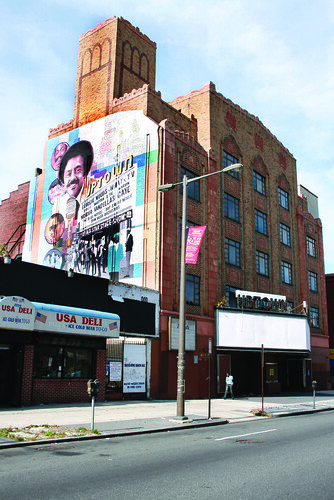The legendary performing arts venue prepares to make the jump from rundown to rejuvenated.

There was a point in history where the allure of music did not revolve around conquest. The boastful concern with owning the outlet to a multi-gig, multi-hour consuming library was never an aspiration of musical mavericks, and artists were not seen as collector’s items but as entertainers and portals of cultural bonding.
The digital age has provided infinite access to new sounds and brings the opportunity for musical revolution, but the emphasis on experience has long lost its value.
In the 1980s, the historical Uptown Theater on North Broad Street fell to this decline and with it, fell 30 years of cultural significance. From the early-1900s through the 1960s, many venues were not considered safe for black entertainers and musicians due to segregation in the United States.
There was a thread of locations along the East Coast known as the “Chitlin’ Circuit,” a play on “chitterlings,” or pig intestines prepared specially on African-American holidays, gaining them their reputation as “soul food.” The Uptown Theater in Philadelphia became a member of the “Chitlin’ Circuit” when it came under the ownership of Sam Stiefel in 1951.
One of the most significant hosts, who established his fame at the Uptown Theater, was Georgie Woods, the Philadelphia television and radio persona who would open major musical acts at the Uptown by clanging a cowbell. In a promotional radio broadcast for the theater, Woods recalls the acts that founded the renown of the theater.
Most significantly, these included James Brown, Stevie Wonder, Marvin Gaye, the Isley Brothers, The Supremes, Ray Charles and The Jackson 5. Interestingly enough, The Temptations helped the Uptown gain reputation only on their second tour.
Woods recalls, “[The] Temptations come to the Uptown for the first time, and they stink.” Several months later, however, they were booked again, and “the city was never the same.”
When the 1980s rolled in, tastes changed, and music became comprised much more by mechanics of sounds and artificial rhythm. The Uptown Theater was converted into a movie theater and then used by staggering church congregations until renovations could no longer be financed. For the last 30 years, the building has been out of use.
This winter, however, the theater will celebrate its 80th anniversary through a dinner and dance funded by the Uptown Entertainment and Development Corporation on Saturday, Nov. 7 at 8 p.m. Tickets are $25, and contributions will benefit the restoration of the Uptown Theater.
The company responsible for financing the renovations has also planned events to sponsor the theater. On New Year’s Day, energy efficient LCD lights, purchased by those willing to make contributions to the event, will light the “Uptown Theater” Marquee.
Additionally, the theater will present a “Legends of Rhythm and Blues” concert in September of 2010, featuring artists who performed in the Philadelphia “Uptown and Neo Soul Artists” festival.
Renovations to this landmark in music history will likely bring about a more focused cultural experience that has been long lacking in the area. There was once a time when community was recognized through the hospitality of musical venues, packed from wall to door with people dancing and witnessing a turn of revolution.
A performance was much less about the rigid structure of the artist and fans, but about regular people enjoying the presence and possibilities of music. It was about refining style through sound, the nuances of an artist live and the gathering of people in a celebration of spirit. In order to revive this sense of vivacity, the renovated Uptown Theater will ignite a sense of community back into North Philadelphia.
Like Woods once said, “I wanna see your face in the place.”
Sarah Cowdery can be reached at sarah.cowdery@temple.edu.



Be the first to comment